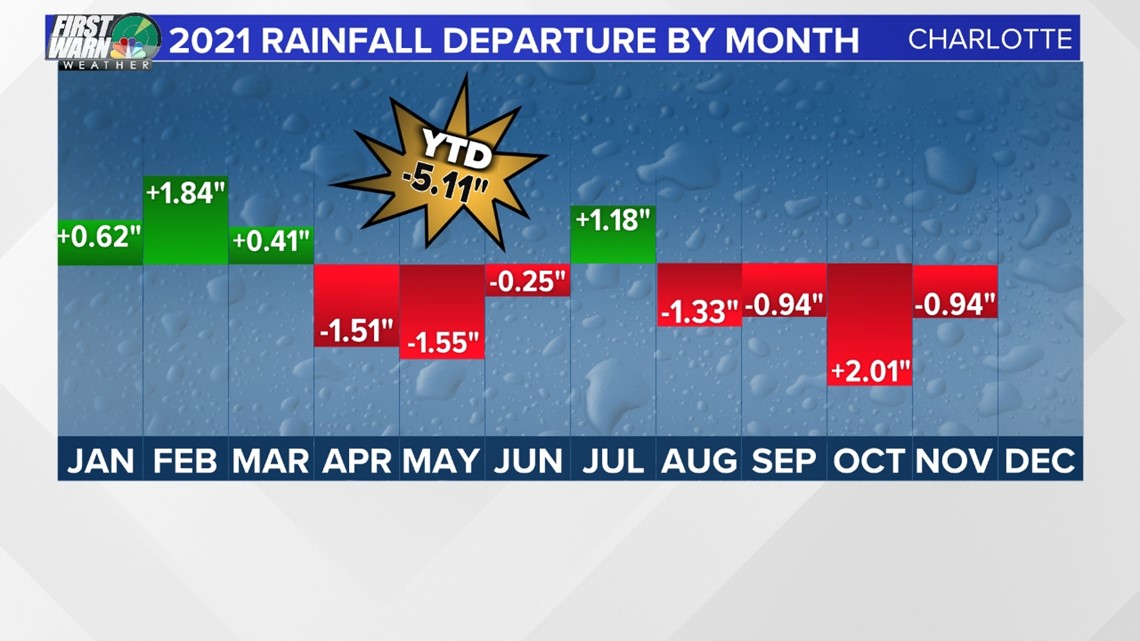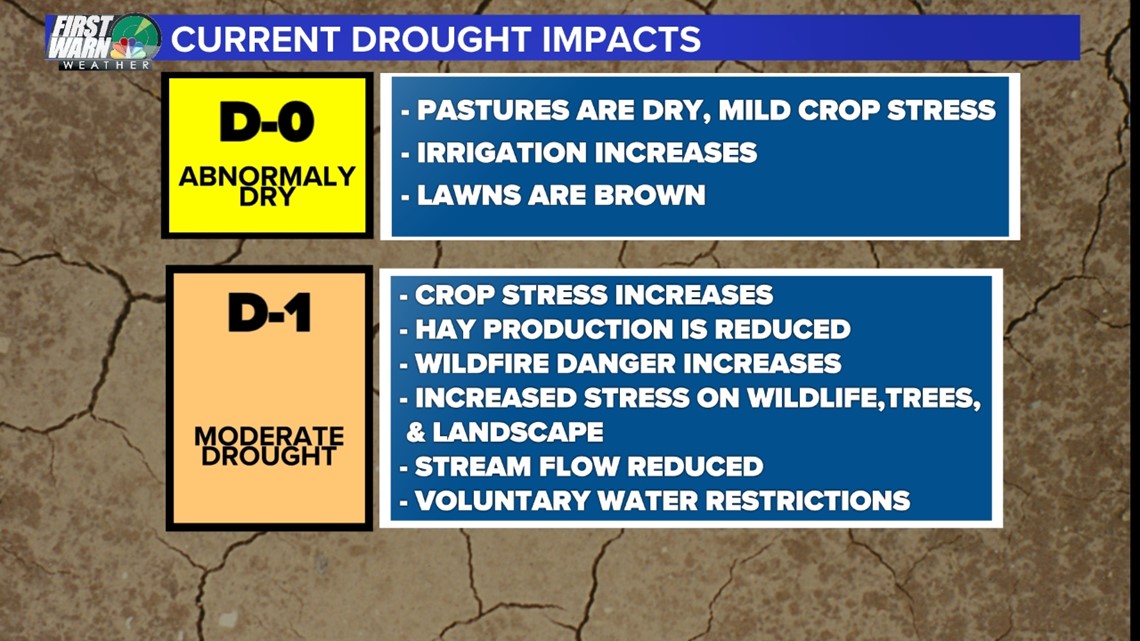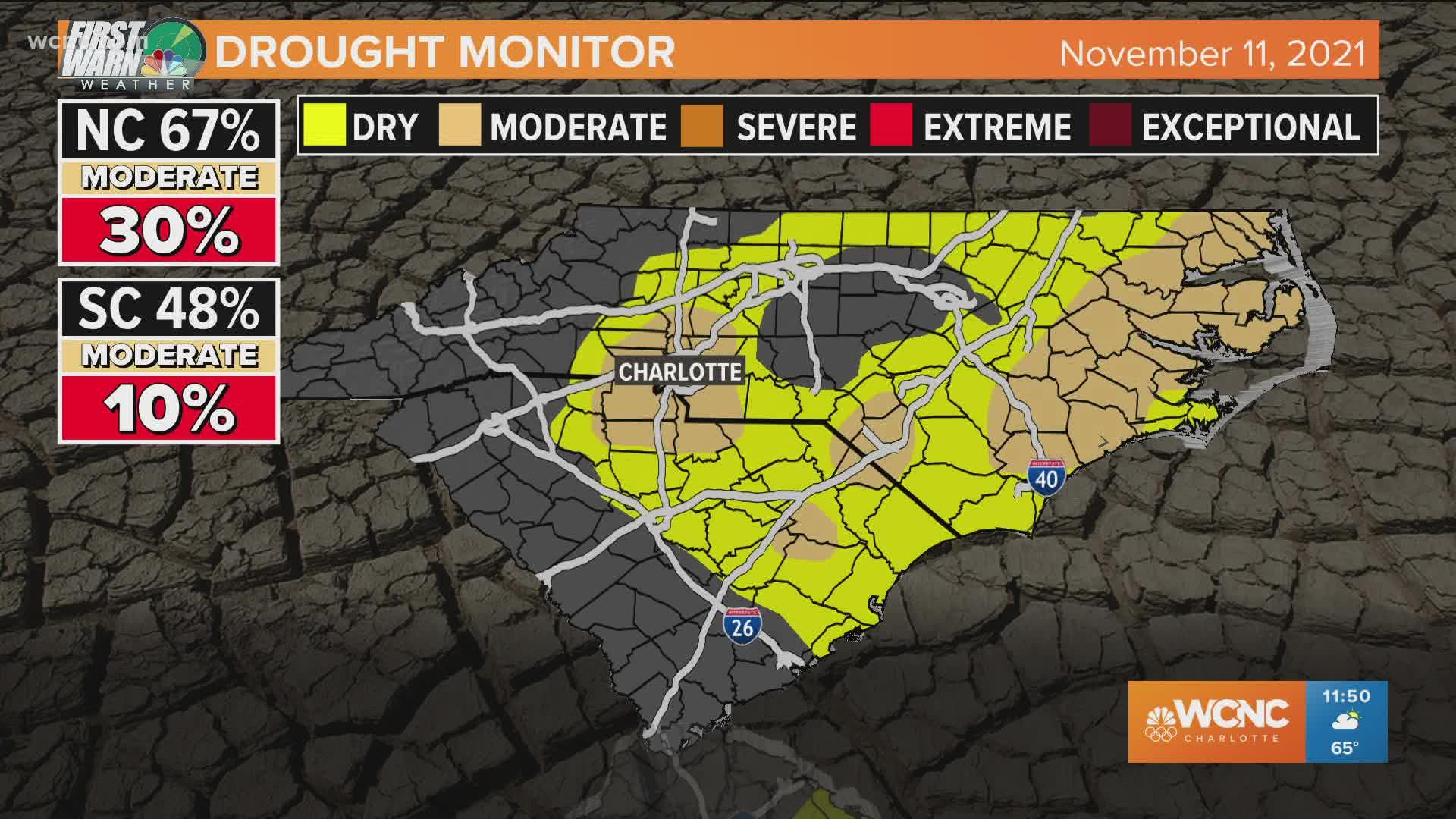CHARLOTTE, N.C. — Every Thursday, the U.S. Drought Monitor issues an update on who is and is not under drought status across the United States.
North Carolina drought
The biggest change was the moderate drought for North Carolina expanding by 7%, bringing the total to 29.85% of the state under moderate drought. That means, nearly two-thirds of North Carolina is under a dry or drought status.
NOTE: D0 (Abnormally Dry), which is currently listed as 33.03% for North Carolina, is not technically a level of drought. This is only the precursor to drought.
South Carolina drought
South Carolina saw a slight improvement in its drought status, with a small section of the state being removed from the D0/dry designation.
However, the moderate drought was extended by 2% compared to just a day ago. The southwestern side of the state is the only area not affected at this point.
Charlotte drought
The Charlotte area had a dry, drought designation starting in September, but it really didn't start to get worse until October, which had the largest departure from the normal rainfall of any month this year.
The last month that was above normal was July.


Impacts
When under a dry status, the worst impact can be felt when it is during the growing season when people will see a brown or browning lawn.
Once an area is upgraded to moderate drought, this will stress plants, trees and crops.


Many of the above impacts could have a long-term effect on trees and even future fall foliage.
How much rain needed?
Going forward to fix this, the areas under a moderate drought will need 4 to 6 inches of rain above normal over the next three months to catch back up. Unfortunately, the rain this week will not help out the cure to this drought.

